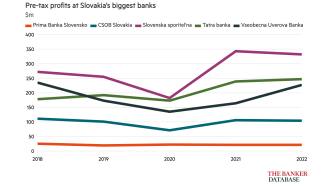Russia hopes to copy China’s success in boosting growth by introducing special economic zones (SEZs) this year, to meet President Vladimir Putin’s challenge of doubling the economy by the end of the decade. However, economists are sceptical that this can be achieved.
This will be the second time the Russian government has attempted to boost investment into laggard regions by granting them tax exemptions. Under former president Boris Yeltsin, basket-case regions like that of Chechnya’s neighbour Ingushetia were made into SEZs but the result was massive corruption and hundreds of millions of dollars of lost tax revenues without any improvements being made to the regional economy.
“When Mr Putin came into office, he nixed the old SEZs, which had turned into massive money laundering operations,” says Robert Orttung, an expert on Russia’s regions and a professor at American University in Washington. “It is not clear if they will be able to carry it off this time and it seems to run counter to his programme of bringing regional legislation in line with federal level laws. Russian businessmen will be sceptical of SEZs, afraid that their privileges will be withdrawn, like last time.”
Accelerated plans
The Economic Development and Trade ministry (EDT) is championing the SEZs’ return and floated plans that proposed the first zone be set up in 2006. These have since been accelerated and the Kremlin is now talking about introducing the first zone in 2004.
Economists point out that SEZs is the only item in Mr Putin’s programme that is aimed at boosting the economy, which put in a robust 7% growth over the first nine months of 2003. “Reforms are moving into a new stage. The economy is doing fine and doesn’t need much tinkering with,” says Al Breach, chief economist at Brunswick UBS Warburg. “Now the Kremlin is turning to structural reform – reducing the corruption and cutting down the bureaucracy to make the system work better and improving the life of the people.”
Between five and seven zones will be created in which companies will be exempt from profit tax for three years, according to the EDT. Companies will be eligible for an eight-year preferential profit tax rate of 3.75% against the current 24% flat rate on all business, provided they reinvest 80% of profits after tax.
Change of direction
If the SEZs appear this year, it will mark a change of direction for Russia. Until recently Mr Putin’s biggest challenge was to bring businesses and citizens back into the system. Under Mr Yeltsin the combination of the lack of cash and punitive taxes drove almost all profitable business into the black economy. Mr Putin has slashed taxes and ended exemptions to make paying taxes easy and affordable while creating transparent regulations, which made them harder to dodge.
Setting up SEZs would reverse this policy and, so far, the only significant tax exemption the Kremlin has granted is for small and medium-sized enterprises (SMEs). SMEs went to the top of the Kremlin’s priority list in December 2001 after the president personally intervened to push through a raft of reforms to support them and SMEs have since doubled their share of GDP to about 14%.
Deputy economics minister Arkady Dvorkovich said in June that the EDT was looking at SEZs as one of the ways to meet the challenge of doubling the economy by 2010 because the existing plans would leave them wide of the mark. “Our economic programme was tailored to producing growth but we are facing a tougher challenge now. The solutions we worked out to deliver 6% growth are not enough to produce 8% growth,” he said.
The reforms have, in effect, already paid dividends. Economists estimate the size of the black economy has shrunk from more than 40% of GDP in the 1990s to about 25% at the end of 2003.
Last year, Russia improved its Cato Institute ranking, which measures a country’s economic freedom. It emerged 112th out of 123 nations, up from 116th in 2002 and 117th in 2001. Top of the list is Hong Kong, a Chinese SEZ, although China itself is ranked just ahead of Russia at 100.
Different approach
Still, economists remain sceptical about Russia’s ability to copy China. Apart from the past abuses, Russia is a less attractive investment destination for manufacturers than China.
“It needs to be done smartly and there is the danger that businesses will simply register in a SEZ region to get the tax breaks, without adding anything to improve the economic activity in the region,” says Mr Breach. “In Russia, making the zones work will be an uphill struggle as, unlike China, it does not have a comparative advantage in manufacturing; labour costs are higher. This will be about encouraging investment for production aimed at the domestic market, not for export.”
With real incomes rising by more than 8% a year and retail spending by the 145 million population growing by an even more robust 12%-14% a year, Russia’s domestic market is starting to look more attractive to both local businessmen and foreign investors.











